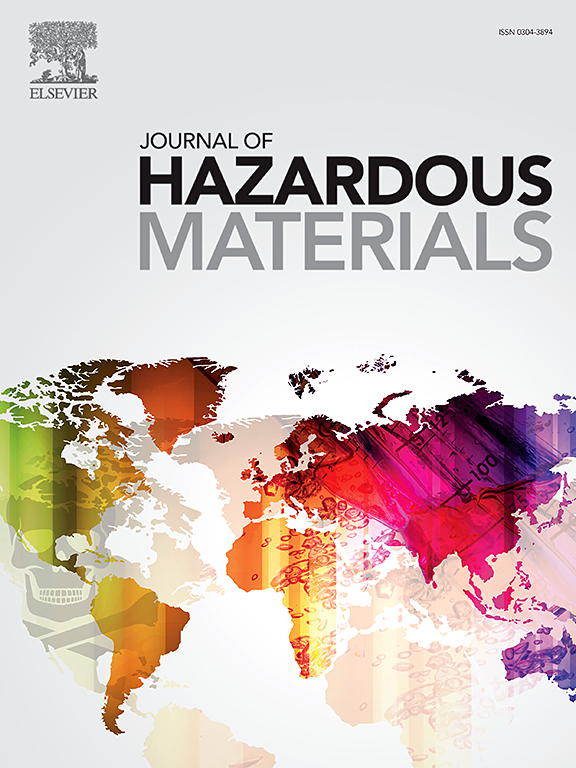The impact of the COVID-19 epidemic on anthropogenic emissions in the Beijing-Tianjin-Hebei region of China based on 3DVar sectoral emission inversion
IF 11.3
1区 环境科学与生态学
Q1 ENGINEERING, ENVIRONMENTAL
引用次数: 0
Abstract
The coronavirus disease 2019 (COVID-19) epidemic can be regarded as a significant means of sustained emission reduction over a considerable time period. In this work, we developed and verified a three-dimensional variational initial conditions assimilation and sectoral emission inversion method that combines the integrated source apportionment method and the extremely randomised trees method (ICIS). This study focused on the fine particulate matter (PM2.5) and ozone (O3) concentrations of the Beijing-Tianjin-Hebei (BTH) region simulated by a Community Multiscale Air Quality Modelling System (CMAQ) with data from before and during the COVID-19 epidemic. The area-averaged root mean square errors of PM2.5 and O3 were reduced by 45% and 29%. A comparison results using ICIS revealed that the total emissions of PM2.5, nitrogen oxides (NOX), and volatile organic compounds (VOCs) during the COVID-19 epidemic were approximately 77%, 88%, and 81%, of those in the pre-epidemic period. The results of the study indicate that the PM2.5 concentration in Beijing decreased by 5.78 μg/m3 during the epidemic, with the residential, industry, and transportation sectors contributing 39%, 28%, and 26%. An increase in the O3 concentration of 0.05 μg/m3 was observed, which was attributed to changes in the contribution of the transportation sector.

基于3DVar行业排放反演的新冠肺炎疫情对京津冀地区人为排放的影响
2019冠状病毒病(COVID-19)疫情可被视为在相当长一段时间内持续减排的重要手段。在这项工作中,我们开发并验证了一种三维变分初始条件同化和部门排放反演方法,该方法结合了综合源分配方法和极端随机树方法(ICIS)。利用社区多尺度空气质量模拟系统(CMAQ)对京津冀(BTH)地区的细颗粒物(PM2.5)和臭氧(O3)浓度进行了模拟研究。PM2.5和O3的面积平均均方根误差分别降低了45%和29%。ICIS对比结果显示,新冠肺炎疫情期间PM2.5、氮氧化物(NOX)和挥发性有机化合物(VOCs)的总排放量分别约为疫情前的77%、88%和81%。研究结果表明,疫情期间北京市PM2.5浓度下降5.78 μg/m3,其中居民、工业和交通部门贡献分别为39%、28%和26%。O3浓度增加0.05 μg/m3,这与交通部门贡献的变化有关。
本文章由计算机程序翻译,如有差异,请以英文原文为准。
求助全文
约1分钟内获得全文
求助全文
来源期刊

Journal of Hazardous Materials
工程技术-工程:环境
CiteScore
25.40
自引率
5.90%
发文量
3059
审稿时长
58 days
期刊介绍:
The Journal of Hazardous Materials serves as a global platform for promoting cutting-edge research in the field of Environmental Science and Engineering. Our publication features a wide range of articles, including full-length research papers, review articles, and perspectives, with the aim of enhancing our understanding of the dangers and risks associated with various materials concerning public health and the environment. It is important to note that the term "environmental contaminants" refers specifically to substances that pose hazardous effects through contamination, while excluding those that do not have such impacts on the environment or human health. Moreover, we emphasize the distinction between wastes and hazardous materials in order to provide further clarity on the scope of the journal. We have a keen interest in exploring specific compounds and microbial agents that have adverse effects on the environment.
 求助内容:
求助内容: 应助结果提醒方式:
应助结果提醒方式:


